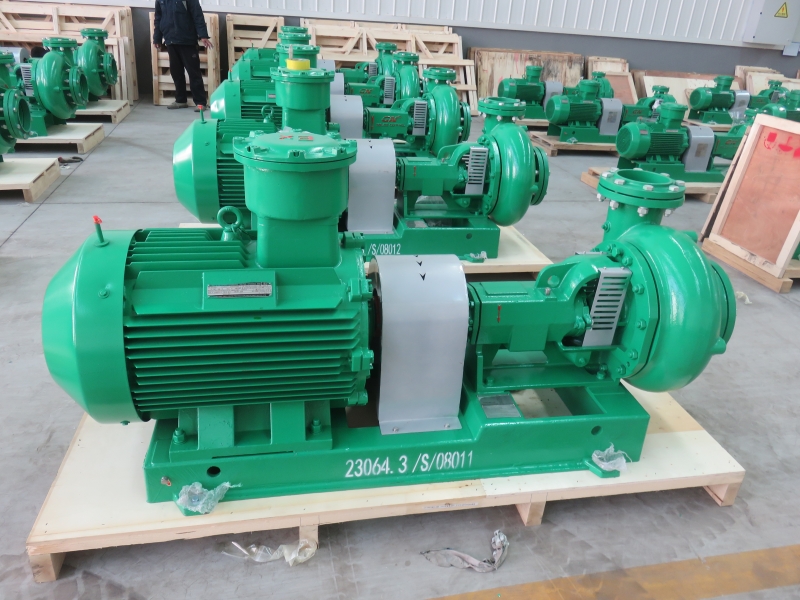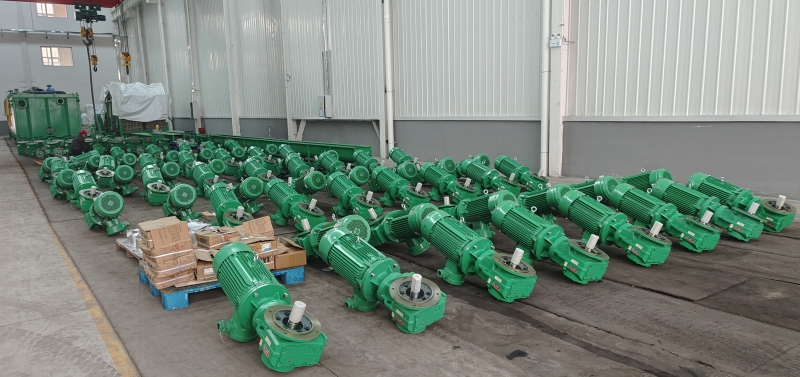

GN Brief Introduction.
GN is a well-known brand from China, its full company name is HeiBei GN Solids Control Co.,Ltd which locadted in No.3 Industry Road, Dachang Chaobai River Development Area,Langfang, China; We are known around the world for unique innovation without compromise, sophistication while maintaining user simplicity, and superb service to our extremely wide customer base.specializing in supplying solids control& waste management equipment to the global market.
A centrifugal pump is a mechanical device designed to move fluids by the conversion of rotational kinetic energy into hydrodynamic energy. It’s one of the most common types of pumps used in various industries and applications, including water supply, wastewater treatment, chemical processing, agriculture, and more.
Here’s how a centrifugal pump generally works:
- Impeller: The key component of a centrifugal pump is the impeller, which is a rotating disk with vanes. As the impeller rotates, it creates centrifugal force, pushing the fluid outward from the center of rotation.
- Inlet: The fluid enters the pump through the center, known as the suction or inlet side.
- Centrifugal Force: As the impeller spins, the centrifugal force generated by the rotating impeller blades accelerates the fluid radially outward.
- Conversion of Kinetic Energy: The kinetic energy of the fluid is converted into pressure energy as it moves through the impeller. This pressure energy increases the fluid’s velocity and pressure.
- Outlet: The fluid then exits the pump through the outlet or discharge side.
- Casing: The impeller is housed within a casing, which helps direct the flow of fluid and contains it within the pump. The casing typically has a volute shape to efficiently collect and redirect the fluid leaving the impeller.
- Motor: A motor or engine drives the impeller to create the rotational motion necessary for pumping. The motor can be electric, hydraulic, or even engine-driven depending on the application.
Centrifugal pumps offer several advantages, including:
- Simplicity of design and construction.
- Wide range of flow rates and pressures.
- Ability to handle various types of fluids, including liquids with solids in suspension.
- Relatively low maintenance requirements.
An agitator is a mechanical device used in various industries and applications to stir or mix liquids, slurries, or other materials inside a container or tank. It typically consists of a shaft with blades or paddles attached to it, which rotate within the container to agitate the contents. Agitators are commonly used in chemical processing, pharmaceutical manufacturing, food and beverage production, wastewater treatment, and many other industrial processes.
Here are some key aspects of agitators:
- Types of Agitators: There are different types of agitators designed for specific purposes and applications. Common types include:
- Paddle Agitators: These have flat blades that rotate to stir the contents.
- Propeller Agitators: These have angled blades similar to a boat propeller, generating axial flow.
- Turbine Agitators: These have multiple blades that induce both radial and axial flow.
- Anchor Agitators: These have curved blades that scrape the walls of the container, providing efficient mixing.
- Magnetic Agitators: These use magnets to rotate a magnetic stir bar inside the vessel without the need for a shaft penetrating the vessel wall, which is useful in sterile or hazardous environments.
- Functions: Agitators serve several functions, including:
- Mixing: Blending different components uniformly.
- Homogenization: Creating a consistent mixture throughout the container.
- Suspension: Keeping solid particles suspended in a liquid medium.
- Heat Transfer: Enhancing heat exchange between the fluid and the vessel walls.
- Gas Dispersion: Facilitating the dispersion of gases into the liquid phase.
- Design Considerations: The design of an agitator depends on various factors such as the properties of the materials being mixed, the desired mixing intensity, the size and shape of the container, and the process requirements. Factors like blade shape, speed, and placement are carefully considered to achieve optimal mixing efficiency.
- Drive Mechanisms: Agitators are typically driven by electric motors, gearboxes, or other power sources. The drive mechanism may be mounted on the top, bottom, or side of the tank, depending on the design and application requirements.
- Control Systems: In many industrial processes, agitators are integrated into control systems to regulate mixing parameters such as speed, direction, and duration. This ensures consistent product quality and process efficiency.
Overall, agitators play a crucial role in numerous industrial processes by facilitating efficient mixing and agitation of fluids and materials. Proper selection, design, and operation of agitators are essential for achieving desired process outcomes.
For our latest equipment brochure or more info, please visit our unique official website: www.gnsolidscontrol.com
MichaelSong
Europe&Aisa Market Manager
Whatsapp:+86 17801799913
E: michael@gnsolidscontrol.co